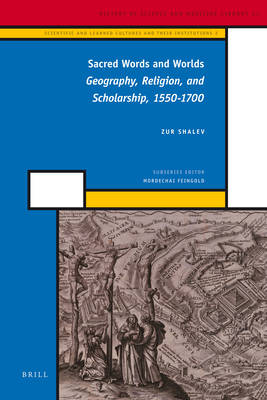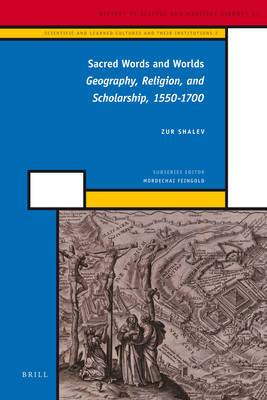
- Afhalen na 1 uur in een winkel met voorraad
- Gratis thuislevering in België vanaf € 30
- Ruim aanbod met 7 miljoen producten
- Afhalen na 1 uur in een winkel met voorraad
- Gratis thuislevering in België vanaf € 30
- Ruim aanbod met 7 miljoen producten
Zoeken
€ 222,95
+ 445 punten
Omschrijving
In early modern Europe, fundamental geographical as well as religious certainties became unstable. At the intersection of the two stood sacred geography. This book examines the scope and content of this early modern scholarly genre, which engaged many of Europe's leading scholars. On the one hand, 'geographia sacra' is analyzed in the context of antiquarian scholarship. Equipped with newly-developed sophisticated tools, scholars compiled, measured, and meticulously documented biblical and ecclesiastical space. On the other hand, this study argues, 'geographia sacra' was never detached from present concerns, and took part in confessional debates over scriptural authority, papal legitimacy, and the authenticity of liturgy. Hence today's interest in the notions of 'sacred space' and spatiality had a lively, controversial, and crucial precedent in the sixteenth and seventeenth centuries.
Scientific and Learned Cultures and Their Institutions, 2
Scientific and Learned Cultures and Their Institutions, 2
Specificaties
Betrokkenen
- Auteur(s):
- Uitgeverij:
Inhoud
- Aantal bladzijden:
- 344
- Taal:
- Engels
- Reeks:
- Reeksnummer:
- nr. 21
Eigenschappen
- Productcode (EAN):
- 9789004209350
- Verschijningsdatum:
- 14/10/2011
- Uitvoering:
- Hardcover
- Formaat:
- Genaaid
- Afmetingen:
- 167 mm x 248 mm
- Gewicht:
- 698 g

Alleen bij Standaard Boekhandel
+ 445 punten op je klantenkaart van Standaard Boekhandel
Beoordelingen
We publiceren alleen reviews die voldoen aan de voorwaarden voor reviews. Bekijk onze voorwaarden voor reviews.








